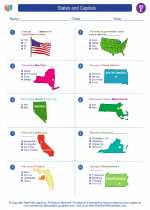Favoritism in Social Studies
Favoritism refers to the practice of showing unfair preference or partiality towards a particular person, group, or thing over others. It can manifest in various contexts, including social, political, and economic spheres. In the study of social studies, understanding favoritism is important as it impacts relationships, power dynamics, and societal structures.
Key Concepts to Understand Favoritism
- Definition: Favoritism is the act of giving preferential treatment to a person or group, often based on personal biases or unfair reasons.
- Examples: Explore real-life examples of favoritism in historical and contemporary contexts, such as nepotism in politics, unequal resource distribution, or discriminatory hiring practices.
- Impact: Discuss the consequences of favoritism on individuals, communities, and institutions. This can include feelings of injustice, inequality, and the perpetuation of systemic biases.
- Addressing Favoritism: Examine strategies for mitigating favoritism, promoting fairness, and fostering inclusive environments in various settings.
Study Guide for Favoritism
To gain a comprehensive understanding of favoritism, consider the following study guide:
- Define favoritism and provide examples of how it can manifest in different aspects of society.
- Discuss the ethical implications of favoritism and its potential impact on social relationships and power dynamics.
- Analyze historical and contemporary instances of favoritism in politics, economics, and social structures.
- Examine the role of favoritism in perpetuating inequality and its effects on marginalized groups.
- Explore strategies for addressing favoritism and promoting fairness in various environments, such as schools, workplaces, and government institutions.
By studying favoritism in social studies, students can develop a critical understanding of fairness, equity, and the implications of biased treatment within society.
.◂Social Studies Worksheets and Study Guides Fifth Grade. States and Capitals
Study Guide States and Capitals
States and Capitals  Worksheet/Answer key
Worksheet/Answer key States and Capitals
States and Capitals  Worksheet/Answer key
Worksheet/Answer key States and Capitals
States and Capitals  Worksheet/Answer key
Worksheet/Answer key States and Capitals
States and Capitals 

 Worksheet/Answer key
Worksheet/Answer key
 Worksheet/Answer key
Worksheet/Answer key
 Worksheet/Answer key
Worksheet/Answer key

The resources above cover the following skills:
Geography: A student should be able to utilize, analyze, and explain information about the human and physical features of places and regions. A student who meets the content standard should:
Understand that a region is a distinct area defined by one or more cultural or physical features.